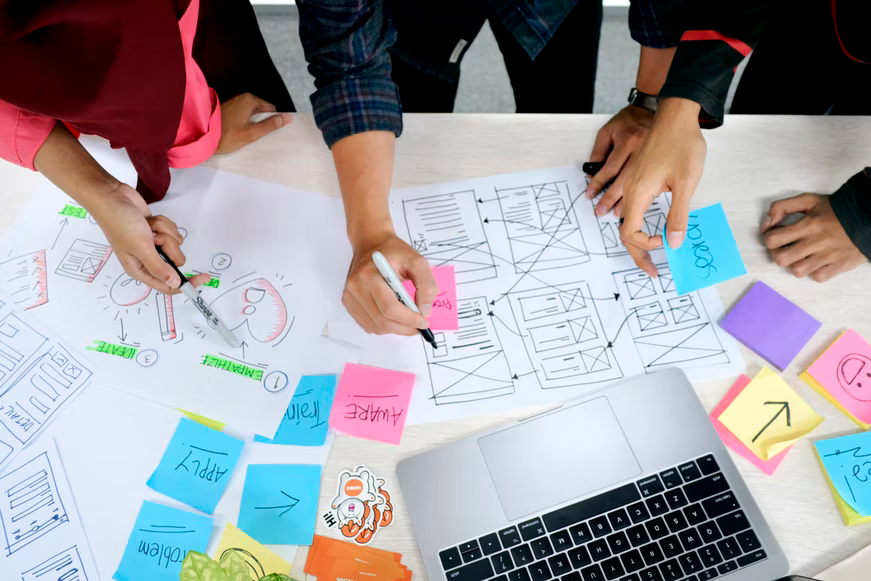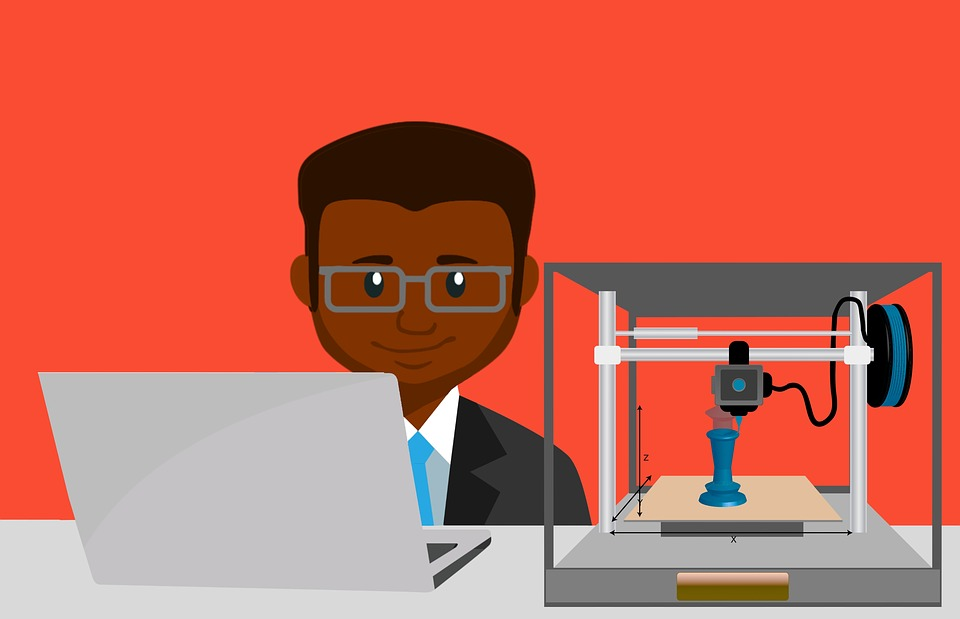Design Thinking: How It Works, Benefits And Why You Should Embrace It
Is there a universal approach that innovators use for creatively solving problems? What differentiates a good design from a bad one, and how can companies and innovators address human-centered issues practically? Brands worldwide are exploring ways to improve the creative and innovative delivery of solutions to everyday problems. Innovators have one thing in common – they generate ideas and work on those that provide real value. They rely on design thinking, a methodology that has been in existence for several years. It is a comprehensive strategy that fuses technology, human and business needs. So, how does this methodology work? When can you use it? How can individuals or companies benefit from using design thinking? We describe how to leverage design thinking to generate innovative solutions and adapt to customer needs to drive social innovation.
What is Design Thinking Approach?
Although design thinking has been in existence for a long time, it wasn’t popular among businesses. It is the literary works of Tim Brown that gave the methodology momentum in small and large scale businesses globally. The application of design thinking spans all sectors of the economy and is becoming a key area of study in notable universities, including the Harvard Business School.
Design thinking is a methodology that allows the innovator to observe and empathize with how people interact with products or services, their immediate environment and businesses, then perform a series of iterative activities to solve problems and create desirable sustainable and profitable products.
Design thinking is one way for product development teams to think outside the box. It provides tools for innovators to understand and break down complex problems. Their goals go beyond developing new products. Instead of focusing on the critical features and functions of the end product, the innovator has to understand the context of the problem, preferable steps for solving the problem and how they will address future challenges relating to the challenge at hand.
Design thinking happens in several stages. It involves iterative processes to challenge assumptions and validate strategies and solutions for solving user-specific needs. Think of this methodology as a tool that UX designers, an industrial design company, engineers, architects, or fashion designers can use to overcome innovation challenges and deliver effective solutions.

Every solution should be human-centric
Why is Design Thinking Important
During the product development process, innovators anticipate retaining a competitive advantage in the market. They explore means to increase the success factor of their products and ensure that their solutions are unique from any other existing in the market. People approach problems differently, and for a designer, it is crucial to focus on a solution and the action process. The five phases of design thinking enable innovators to:
- Understand challenges from the user’s perspective. They can then build a case for the desirability of new products and understand how to answer consumer questions correctly.
- Solve ambiguous customer needs in a cost-effective and sustainable process. Consumers may use the same product but face different challenges. How they describe these challenges varies depending on their user experiences.
- Establish the economic viability and the technological feasibility of a product.
- Reduce the risks associated with the introduction of new products to established markets.
- Improve invention design by collaborating with the end-users throughout the user research, testing and prototyping stages.
- Establish protocols for rapid prototyping to speed up the introduction and improvement of new products in the market.
- Design thinking presents an opportunity for innovators to solve multiple problems in a single go.
- Design thinking improves the efficiency and productivity of organizations. Innovators and designers have a clear blueprint on when and how to implement specific activities. They learn how to utilize creativity collaboration to handle complex product development projects.
The framework instills change by design and fosters creative leadership among team members. It enables businesses to redefine the value of their products, restructure business models, adapt effectively to market dynamics and tackle resilient societal problems.
How Can One Begin Using Design Thinking
It is easy to assume that design thinking techniques are only appropriate for big businesses and large projects. It is not a reserve of design consultancies and million-dollar organizations alone. Individuals, small businesses, freelancers and leaders can implement this methodology to introduce a fresh breath to business operations and workflows. You need to analyze human needs and creatively utilize the available resources to develop economically viable products. The products must resonate with the prevailing technologies.
It is a human-centered problem-solving strategy that is practical across all economic fields. Perhaps you’re wondering how one can get started. Is it something that requires heavy financial investment? Or maybe you are wondering if the strategy will yield results fast. Try to approach the problem from the user’s perspective and brainstorm for potential solutions like a design thinker.
- Every solution that you will work on should empathize with the human user. Everything you do must address the pain points that users experience when performing tasks or using certain services.
- Do not limit your imagination. Experiment with the limits of your creativity and knowledge of consumer challenges. More ideas will give you a better end product.
- Ensure that the product you are working on is re-designable. Remember that the new product is subject to modifications and redesigns to accommodate advanced technological features and incorporate end-user feedback.
- The end product should provide tangible value to the users. As a designer, ensure that the prototype communicates how the product solves a problem. The problem-solving procedure has to be easily understandable by the target market.
- Before you begin, gather enough information. Invest in user research. Consider setting aside enough time to interact and interview users and research the internet. It enables you to make conclusive comparisons with similar products.
- Convert the problems to questions, do not rush to find solutions before getting to the root of the user problem at hand.
Design Thinking Versus Scientific Problem-Solving Approaches
The design thinking framework and scientific research have several things in common. Both methodologies are vital for researching user needs and strategically leveraging findings to design solutions, transform organizations and reshape consumer behaviors. Both strategies are research-intensive and infer from past data records. They also analyze the present and predict the future to develop practical solutions to outlast generations.
However, in a scientific problem-solving approach, the designer has access to initial data and works from a known point. The researcher is privy to the qualities and characteristics of the user problem at hand. The designer or the scientist has to test the user problem against a predefined set of hypotheses. They then observe how the solution evolves depending on the prevailing conditions.
Design thinking works on a trial-and-error model. The designer or innovator works with ambiguous figures and information. They make rational decisions by questioning the results of every stage and adapting to the obstacles or opportunities that arise during the process.
The design thinking methodology is nonlinear, and participants must innovatively look for ways to shorten project delivery timelines and continuously improve on the available solutions.

Brainstorm and Select The Best Solution
Stages Of Design Thinking
Before we go further, you must be wondering what stages make up the design thinking process. It may sound as if this methodology contains complex procedures. It is a simple, five-stage framework to ensure a beginner approaches consumer problems with a designer’s mindset. You don’t have to be an experienced product developer to implement the framework in your daily activities. The stages are:
Empathize
It is the initial stage when the developer interacts with the users to identify the problems and establish a comprehensive list of what they expect. The product development teams conduct surveys or interviews and observe how different audiences utilize a product or service. The innovator can use an empathy map to understand the target audiences better.
Define
After the interaction with customers, the development team moves towards identifying the exact problem. They pinpoint the user needs that present attractive opportunities for innovation and monetization. The problem definition stage enables the innovator to create a clear set of objectives and procedures for solving the problem.
Ideate
The ideation phase is when rubber begins hitting the road.
Teams meet for brainstorming sessions and begin focusing on how to solve the problem. The developers list potential solutions and evaluate them for quality and deliverability using in-house criteria. Every idea is a candidate for success.
Prototype
The idea that emerges as the most viable solution moves to the prototype design stage. The prototype is a small model that mimics the end product and allows the development team to test and validate the functionality of their products. Companies can use rapid prototyping to produce multiple variations of the same products to enhance feedback collection.

Build Cheap Prototypes To Validate Solutions
Test
The developer releases the prototypes to selected individuals who test the models and provide feedback that developers can use to improve or modify designs. User feedback is vital for deciding whether the design teams should move to full-scale production or restructure their product development objectives.
The Economic Benefits Of Design Thinking
The whole idea behind design thinking is to build delightful products for the target customers. We are aware that the product development stages in this framework are interdependent and infinite. The end goal is to continuously convert the data from user tests to inspire innovations and improve revenues for the company. So far, there has been little mention of the economic benefits of this strategy. Are you trying to implement this design strategy as a green innovator in the market? Are you an established market brand trying to extend the reach and profitability of the company?
At the core of this framework is the need to control financial resource utilization and drive the sustainability of businesses. The fact that this framework not only works for the development of new products means that business leaders can utilize it to turn the financial fortunes of their companies through mindset changes. The economic benefits of this framework are achievable in the manufacturing sector, software development, fashion industry, web design and even in an eye hospital.
The economic benefits of design thinking are:
- Quick turn-around times: the idea behind this framework is to optimize the problem-solving process. It is an inclusive process that involves the designer and the end-users. The real-time collaborations ensure that the company does not waste time working on an unlikeable product with little success. This strategy uses a combination of lean and agile methodologies that focus on minimizing waste and continuously improving processes. Therefore, companies can develop a new product and deliver it in a fraction of the anticipated time. Time-saving means that companies can adapt flexibly to varying market demands and satisfy the needs of their customers. It improves customer loyalty and retention. The company receives endorsements by word of mouth and referrals from customers who use the product to solve everyday problems.
- Better returns on investment: Stiff competition exists in the global consumer market. Any company needs to optimize its internal operations and maximize the availability of on-demand products. The faster the company validates product functionality, the earlier it can seize the opportunity in an unsaturated market. Minimizing process bottlenecks and challenges in production and marketing enables the company to make better cost savings. Forward-looking companies utilize these savings to strengthen the research and development departments. Such companies are always a step ahead of the competition and are more flexible to diversify the product portfolio and customer reach.
Dealing With The Challenges Associated With Applying Design Thinking
As consumer habits evolve, so do problem-solving techniques change. Companies and individuals should not approach consumer issues using conventional problem-solving methods. Design thinking methodology involves a cultural shift across the entire company. It means that its implementation may take time if the company desires to implement it one department at a time. Companies at the early stage of implementation may face resistance from the teams. Such challenges are common because the organization may have fears over the practicality of a human-centered approach in meeting its business objectives. Company executives may create the notion that the strategy will take time to mature as the product development teams may face challenges trying to balance technology and the perspectives of their target markets.
If you face such challenges in your startup or organization, the first step towards success is to affirm that failure is part of the process. There is nothing wrong with experimenting. If these failures occur at the early stages, the company can gain lessons and put itself in a better position to tackle any future obstacles. The company’s executives should encourage innovation and prototyping to cultivate creativity among product development teams.
Learning in action is the best way to identify challenges and test ideas for improvement. The team masters how to turn challenges into opportunities and gain value from unlikely projects.
When using this framework, the design team should ask:
- How can we solve the problem?
- How can we address arising challenges?
- How do we maintain the course of the original project if we come across new opportunities?
- How can we utilize locally available resources to build quick, cheap and ‘dirty’ prototypes?
Answering these questions enables beginners to navigate the pitfalls and obstacles when introducing a design thinking approach to routine operations.
You will be surprised by the number of successful businesses that constantly require creativity and problem solving to improve their success and serve a diversified customer base.
Final Thoughts
The design-thinking approach facilitates a seamless flow of activities from the onset of the research process into prevailing customer needs to the moment when the innovator launches a life-changing product or service. The framework puts the customer at the center of all the decisions. The customers provide initial data and insights into the complexity of their problems. Engaging the end-user does not necessarily guarantee that the information and insights the design team gathers will be accurate or comprehensive. The user usually leaves several gaps for the design team to fill.
The product development team is responsible for establishing criteria for evaluating and implementing possible solutions. The team has to build prototypes and test them to validate their assumptions on the workability of various solutions. This design strategy has a way of debunking designer biases and assumptions. As the development team gets acquainted with this framework, they develop a creative culture and identify ways to create superior solutions, lower the costs of new products and minimize failure risks.
The methodology requires the collective involvement of individuals having diverse perspectives, emotions and professional backgrounds. It encourages engagement and learning by action. Companies who successfully implement this design methodology can drive a commitment to change and enhance the penetration to consumer markets.
Innovators and companies must understand that implementing design thinking methodology is neither straightforward nor complex. Everyone should be ready for the challenges that accompany the application of this design strategy. Innovators should look beyond the economic benefits of the design strategy. The framework shapes their own experiences and those of their target customers. Putting this social technology to work improves the probability of success and enables organizations to deal with the expectations of their customers.
